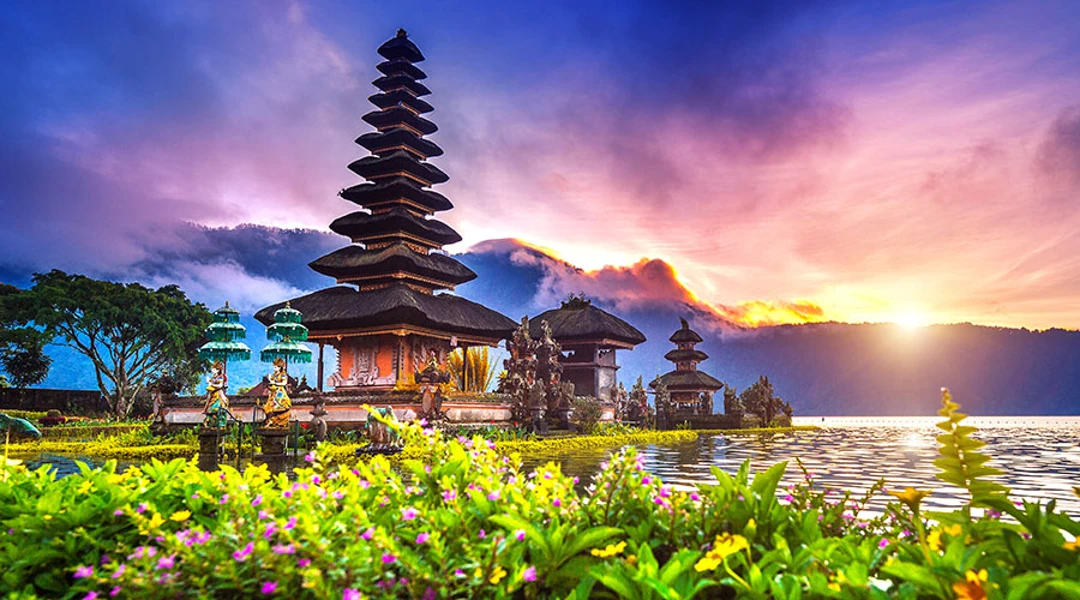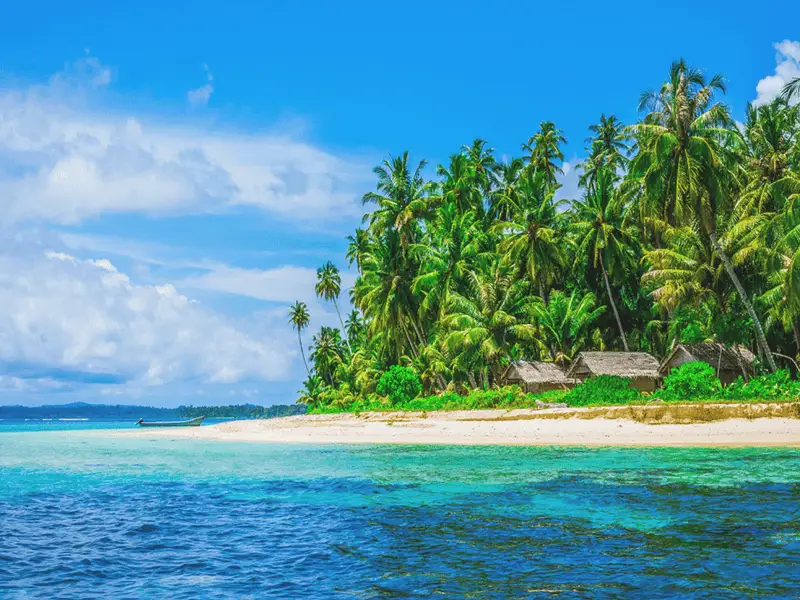Indonesia, known for its stunning beaches, lush landscapes, and rich cultural heritage, has a tropical climate that can greatly influence your travel experience.
With its warm temperatures year-round, understanding the weather patterns can help you plan your trip more effectively.
The country generally experiences two main seasons: the dry season and the rainy season. Depending on when and where you visit, the weather can vary, so it’s important to know what to expect.
For easy travels, an iRoamly Indonesia travel eSIM is a viable option, providing higher speeds which will be helpful if you want to check weather conditions and on-the-ground reports.

Overview of Indonesia’s Climate
Indonesia’s climate is classified as tropical, meaning it stays warm throughout the year with high humidity. Average temperatures generally range from 25°C to 30°C (77°F to 86°F), making it a popular destination for those seeking sunshine and warm weather. However, the country’s vast size and varied geography create significant regional differences in weather.
Coastal Areas: Coastal regions, such as Bali and Java, have relatively moderate temperatures and experience more stable weather conditions.
Inland Areas: Higher altitudes, like in the mountainous regions of Sumatra or Central Java, are cooler and less humid.

Humidity: With humidity levels between 70% and 90%, Indonesia feels warm year-round, but humidity is higher during the rainy season.
The Two Main Seasons
Dry Season (April to October)
The dry season is the best travel period for Indonesia. During these months, rainfall is minimal, and the sun shines consistently. The dry season is ideal for outdoor activities like trekking, surfing, and beach vacations.
Weather: Expect plenty of sunshine, cooler evenings, and relatively low humidity. The daytime temperature is comfortably warm, averaging around 28°C (82°F).
Best Time for Travel: The months between July and September are the peak tourist season, with the best weather. However, these months can be crowded and more expensive, so it’s best to book in advance.
Activities: This is the perfect time to explore the islands, visit the temples, and enjoy water sports without worrying about unexpected rain.

Rainy Season (November to March)
The rainy season, also known as the wet season, lasts from November to March. During this time, Indonesia experiences heavy rainfall and high humidity, especially in the western parts of the country. However, rain doesn’t usually last all day, so travelers can still enjoy activities with some flexibility.
Weather: Frequent afternoon and evening showers, sometimes lasting for several hours. Expect higher humidity and lush, green landscapes.
Challenges: Some areas, particularly in the mountains and rural regions, may face flooding or disruptions in transportation. The weather can be unpredictable, so it’s important to be prepared.
Best Time for Lower Crowds: While the rainy season is less ideal for some outdoor activities, it’s an excellent time for fewer tourists and discounted prices on accommodation.
Regional Weather Differences
Due to Indonesia’s size and geography, the weather can vary greatly from one region to another. Here’s a brief look at how different areas experience the weather:
Sumatra and Borneo: These islands are among the wettest regions of Indonesia. The rainy season here can last almost year-round, but you can still visit during the dry months for less rain and more sunshine.

Java and Bali: Bali has a slightly drier climate than other parts of Indonesia, with a distinct dry season, making it ideal for beach holidays. Java, being a more urban region, also enjoys a moderate climate but can get cooler in the higher altitudes.
Eastern Indonesia (Maluku and Papua): These areas experience more extreme variations. Some parts are consistently wet, while others see less rainfall depending on the season and altitude.
Best Time to Visit Indonesia
When planning a trip to Indonesia, it’s important to consider the time of year to ensure the weather is right for the activities you want to do.
Peak Travel Season (July to September): This is the best time for beach lovers, nature enthusiasts, and outdoor adventurers. The weather is perfect for exploring Indonesia’s beautiful beaches, hiking volcanoes, and enjoying water activities.

Shoulder Seasons (April to June, October): These months offer a good balance of favorable weather and fewer tourists, making it a great time to visit if you want to avoid the crowds but still enjoy good conditions.
Off-Peak Travel (November to March): If you prefer fewer tourists, consider visiting during the rainy season. While you’ll likely encounter rain, this time of year offers discounted prices and a quieter experience. However, be prepared for rain showers and check local weather forecasts for your specific destination.
What to Pack for Different Seasons
The weather in Indonesia is warm year-round, but depending on the season, what you pack might differ. When dressing for Indonesia, it's important to consider both the climate and activities.
1. Dry Season (April to October):
Light, breathable clothing to stay cool in the heat.
Sunscreen, sunglasses, and a hat to protect against the sun.
Comfortable shoes for walking and exploring.
A light jacket or sweater for cooler evenings.

2. Rainy Season (November to March):
Waterproof gear, such as an umbrella or rain jacket.
Quick-drying clothes and waterproof shoes.
Mosquito repellent, as the wet conditions can bring more insects.
FAQ
1. When is the best time to visit Indonesia for good weather?
The best weather is during the drier months from April to October. There are plenty of sunny days and less rain, making it perfect for outdoor activities and exploring.
2. Does it rain every day during the rainy season?
While rain is frequent, it usually comes in short bursts, often in the afternoon or evening. You can still enjoy outdoor activities.
3. Is it safe to travel to Indonesia during the rainy season?
Yes, traveling during the rainy season is safe, though some areas may experience more rain, leading to disruptions. It’s best to check local forecasts.
4. What are the temperature ranges throughout the year in Indonesia?
Temperatures typically range from 25°C to 30°C year-round, but higher altitudes can experience cooler temperatures.
Conclusion
Understanding Indonesia’s weather patterns is essential for planning a successful trip.
Whether you prefer the sunny days of the dry season or the quieter, lush landscapes of the rainy season, knowing when and where to visit will help you make the most of your experience.
Keep in mind that the weather can vary by region and time of year, so it’s important to pack accordingly and check forecasts closer to your travel dates.
